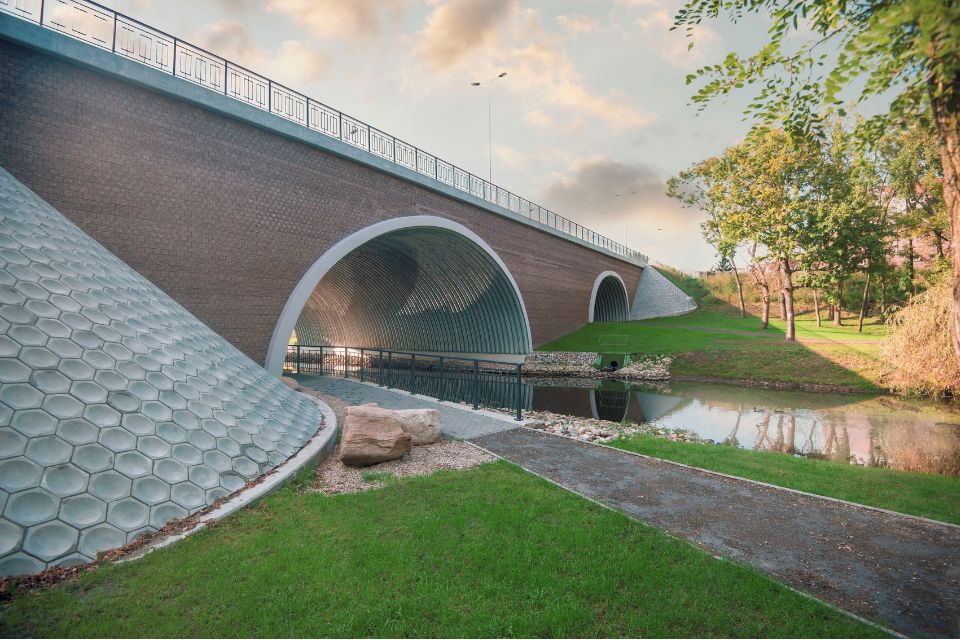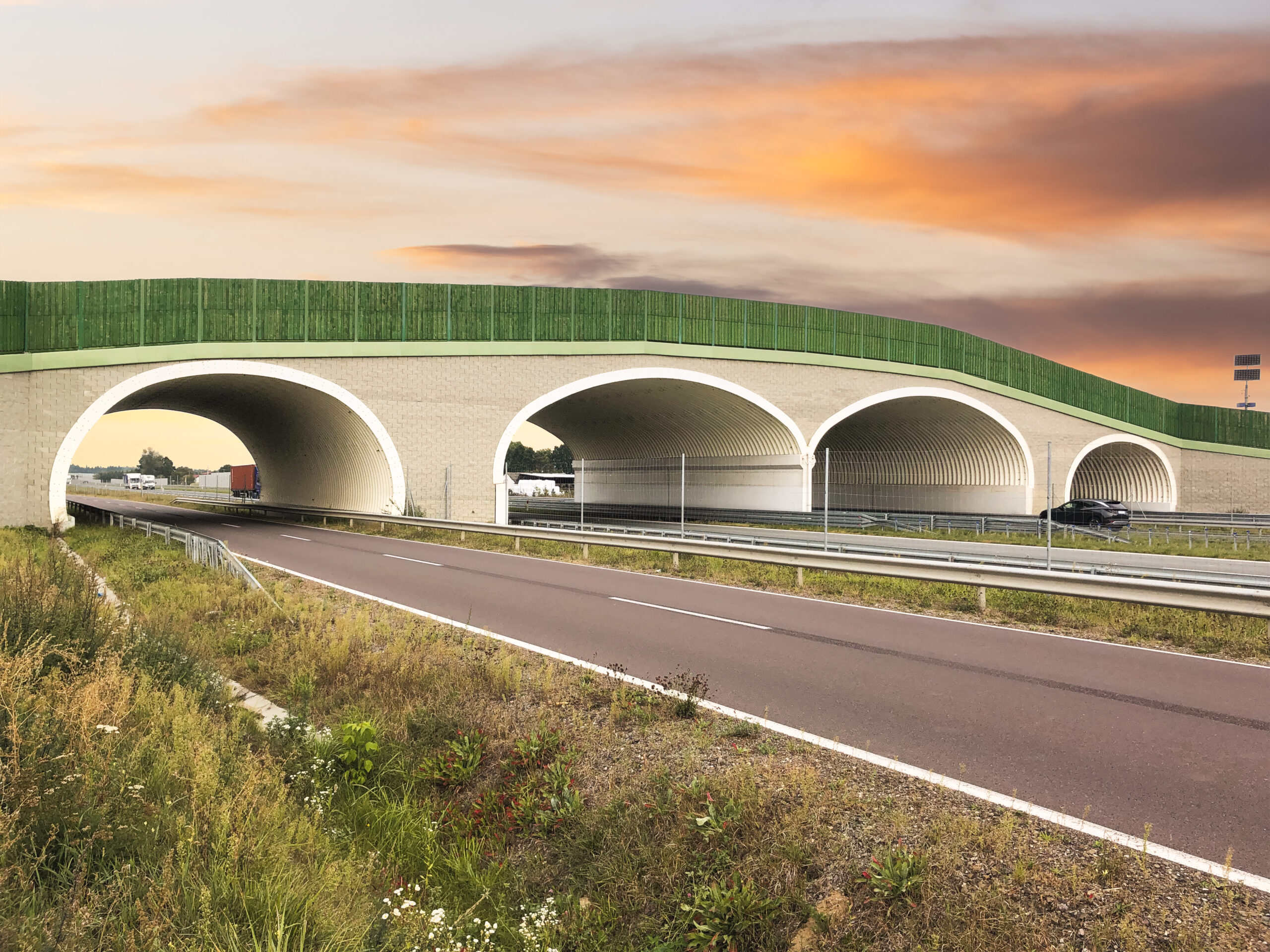Infrastructure made smarter and more sustainable
Much of what makes up society’s Infrastructure is built and functions for decades without most people giving it much of a thought. It facilitating carrying people and transport from place to place with things like roads, railways and bridges, stabilizes the ground and soil on which buildings and structures are constructed, and manages rain and stormwater in a variety of settings. Many of these solutions are tried and true – and have been built and functioning for a long time to support long-lasting infrastructure.
But as the global climate change crisis accelerates, the demand for altering how we think about everything means looking at existing solutions with fresh eyes. This includes the backbones of our society in the form of infrastructure, its construction and the materials we use to build with – all with sustainability and circularity in mind. The time to think about traditional infrastructure in new ways is now. How can we look at existing solutions and see pathways to greater eco-balance? How can infrastructure contribute to and be a part of the surrounding environment and society without taking away from it? How can we make infrastructure smarter and more sustainable?
Making infrastructure smarter and more sustainable
Creating smarter and/or more sustainable infrastructure isn’t only about adopting digital tools and smart technologies. These innovations can play a significant role, but many of the biggest strides toward sustainability can be taken and realized through rethinking construction methods and types as well as materials.
A bridge to flexible sustainability
For example, in conditions where such construction would be ideal, buried soil-steel bridges using corrugated steel pipes are a sustainable and durable option. Looking at both the immediate, short-term and the full, long-term picture, buried steel bridges offer a range of economic, convenience and sustainability benefits. Building these bridges is less expensive than alternatives both in terms of cost and in terms of labor and construction savings – construction is fast, can be done with minimal impact to the construction site, are lightweight and easy to ship and install, bear larger and heavier loads, and require almost no maintenance for a lower lifetime cost.
And from a sustainability angle, buried steel bridges generally have a lower carbon footprint than concrete alternatives. Steel is the world’s most recycled material, and can be infinitely recycled, making it a circular good. And the manufacture of steel, which has long been its Achilles heel, is becoming less dependent on fossil fueld and moving toward net zero in its production. In terms of energy and transport, buried steel bridges demand less in production and in shipping. The long lifetime of a buried steel bridge means that it needs less maintenance and has a longer lifespan (+/- 70 years) before needing replacement or refurbishment.
Building on stable ground
Geotechnical solutions and geosynthetics are a well-established part of geotechnical and civil engineering. As with other parts of increasingly smart and sustainable construction, geotechnical solutions continue to evolve and innovate, playing an important but often hidden role as a component in design requirements for all kinds of different construction and engineering projects. Their versatility makes geotextiles and geosynthetics integral parts of designs for everything from retaining walls to embankments, from veneer slopes to coastal protection systems and much more.
Infrastructure projects start before the delivery of material – it is all about planning and understanding the parameters and conditions of what it being built and on what kind of ground. What kind of reinforcement and stabilization material is needed? Very often problems can be avoided with a systematic approach to evaluating the application, desired durability, environmental aggressiveness on the reinforcement material and many other conditions. These all need to be considered holistically.
Increasingly these parameters also include environmental and ecological considerations – both in terms of understanding the unstable conditions on the ground due to climate change and soil erosion and in terms of understanding what solutions can mitigate these challenging conditions to facilitate safe and sustainable construction.
Weathering the storm
Rain and storm water is a fact of life, and it is becoming an increasingly critical one as a changing climate is unleashing record numbers of water-related disasters around the globe. And while standard stormwater runoff is one problem, particularly in urban landscapes, ever-larger volumes of water are becoming the norm in both built and natural environments. Effective management of stormwater systems (which can be physical infrastructure or digital tools for monitoring it) is essential to creating a livable and sustainable society.
Many stormwater solutions are straightforward – traditional water retention tanks and rainwater reuse/harvesting solutions, modern technology is adding its spin with IoT-enabled management and monitoring. With rainwater reuse solutions, water management can become more predictable. Rainwater can be put to use in a variety of ways for everything from irrigation to cooling to grey water systems to other water resource uses on an industrial scale. Likewise stormwater systems can draw from flood prevention solutions to supply these water repurposing use cases.
Infrastructure: Getting smarter
Infrastructure has the capacity to get smarter using transformative technologies. While the construction and implementation of the infrastructure solutions themselves may not change much, supporting technologies and innovations will change everything. From reduced-carbon-footprint steel for construction to IoT and ubiquitous connectivity for real-time monitoring to various “smart city” urban planning (from construction to operation to protection), a greener and more sustainable approach to infrastructure is becoming the smarter approach to infrastructure.

